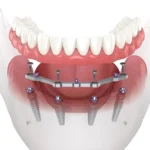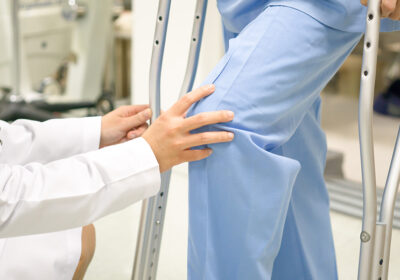
Lung Screening Singapore: What’s it?
Lung conditions if left untreated can have profound effects on overall health. From heart failure, to lung cancer and complications like arrhythmia, they can lead to conditions that can be life threatening in extreme cases.
That’s where lung screening comes in. Your doctor may particularly recommend lung screening in Singapore if they’ve seen that you have a risk of lung cancer.
What is Lung Screening?
Lung screening is a preventive measure for detecting potential abnormalities and diseases in the lungs. The reason for lung cancer screening is to detect the diseases and potential abnormalities an early stage when managing them is easy.
Early identification of conditions like chronic obstructive pulmonary disease (COPD), lung cancer and related conditions provides better chances of getting improved treatment outcomes. And what’s more, you’re almost always guaranteed better survival rates.
What are the Different types of Lung Screening?
There are multiple options for lung screening in Singapore. To determine the most appropriate lung screening method for you, your respiratory specialist will take into account several factors including your age, risk factors and most importantly your overall health. The two most common options for lung screening in Singapore include;
- Low-Dose Computed Tomography (LDCT): Low-dose computed tomography, or LDCT, is a sophisticated imaging technique that provides detailed cross-sectional images of the lungs. It involves the use of a specialized X-ray machine that offers higher sensitivity than traditional chest X-rays. This allows for the detection of smaller nodules or abnormalities.
- Chest X-ray: Chest X-rays, on the other hand, are a quick and accessible method for evaluating the overall health of the lungs. Chest X-rays are not as detailed as LDCT. Nonetheless, they can still provide valuable insights and are often used in situations where LDCT is not readily available or necessary.
What Happens During Lung Screening?
If you’ve been recommended lung screening in Singapore, it is natural to be a little curious to know what exactly happens during the procedure. Here’s a roundup of what you can expect before and during a lung screening procedure;
I. Low-Dose Computed Tomography (LDCT)
- Procedure Overview: During an LDCT scan, you’ll be asked to lie on a table that slides into a large, doughnut-shaped machine. This machine will rotate around your body. As it rotates, it will be capturing multiple X-ray images from different angles. These images will be processed by a computer to create a detailed 3D representation of your lungs.
- Preparation: Preparing for an LDCT scan is relatively simple. You’ll likely be asked to avoid eating for a few hours beforehand. This is to allow for clearer imaging results. Please, inform your healthcare professional about any relevant medical history. Also mention any allergies, and let them know if you’re concerned about any potential risks. Clear communication is key to ensuring a safe and accurate screening experience.
- During the Screening: Rest assured, the LDCT scan itself is a painless and non-invasive procedure. You’ll need to lie still on the table while the machine captures the images. The technician will guide you through the process to ensure optimal positioning for accurate results.
- Potential Risks and Safety Measures: Some individuals may express concerns about radiation exposure during LDCT scans. However, it’s important to note that the radiation dose used in LDCT is significantly lower than that of a standard CT scan. And what’s more, modern technology and lead shielding are used to further minimize radiation exposure and ensure your safety.
II. Chest X-ray
- Procedure Overview: A chest X-ray is a quick and straightforward procedure. You’ll be asked to stand against a flat surface while a technician positions the X-ray machine to capture images of your chest and lungs.
- Preparation: Before a chest X-ray, you may be required to remove clothing or jewelry you have worn to the facility. This is done to avoid any obstruction to the X-ray image. The technologist will guide you through the necessary preparations and ensure proper positioning for optimal image quality.
- During the Screening: During the X-ray, you’ll need to hold your breath for a few seconds while the technician captures the images. While the process may feel slightly uncomfortable, it is generally well-tolerated and over quickly.
When Should You Get a Lung Screening?
Lung screening is an essential procedure. However, it isn’t easy to know the exact time to get it done especially if you do not even know that you have a risk factor for conditions like lung cancer.
Now, lung screening is particularly important if you’re at a higher risk of developing lung conditions. Factors that may contribute to your risk of lung conditions include:
- Smoking History: You have a higher risk of developing lung diseases like COPD if you’re an active current smoker. This is the same case with lung cancer.
- Occupational Hazards: Certain occupations, such as mining or construction work, expose individuals to hazardous substances and particles like airborne respirable dust. These agents cannot only cause damage to the lungs but also increase your risks of dying from lung cancer.
- Family History: Family history of lung diseases or lung cancer is a key reason why your respiratory specialist may recommend lung cancer screening in Singapore even if you’re not exposed to occupational hazards. This is because your risk may be elevated if you have a family history of lung cancer or other lung diseases.
What is the new guideline for lung cancer screening?
To ensure the effective utilization of lung screening resources, medical organizations have established important guidelines on lung screening for cancer. These guidelines typically recommend lung screening for individuals who meet specific criteria, including:
- Age Criteria: Typically, individuals between the ages of 55 and 80 are considered eligible for lung screening.
- Smoking History Criteria: Guidelines often specify a minimum smoking history of 20 pack-years or current smokers who have quit within the last 15 years.
Conclusion
Lung screening is as a crucial tool for the early detection of lung conditions. This is particularly true for lung cancer. You can take proactive steps toward better lung health by understanding the purpose, procedures, and timing of lung screening.
Remember, engaging in open communication with healthcare professionals and considering your risk factors are essential in determining if a lung screening is right for you. Take charge of your lung health, and breathe easier.
At Interventional Pulmonology & Lung Clinic, we prioritize your well-being and aim to provide comprehensive resources to support your journey toward optimal health. For more information about lung screening or to schedule an appointment, reach out to our dedicated healthcare professionals today. Contact details:
Interventional Pulmonology & Lung Clinic
3 Mount Elizabeth,
Singapore 228510
(+65) 9023 0158


















